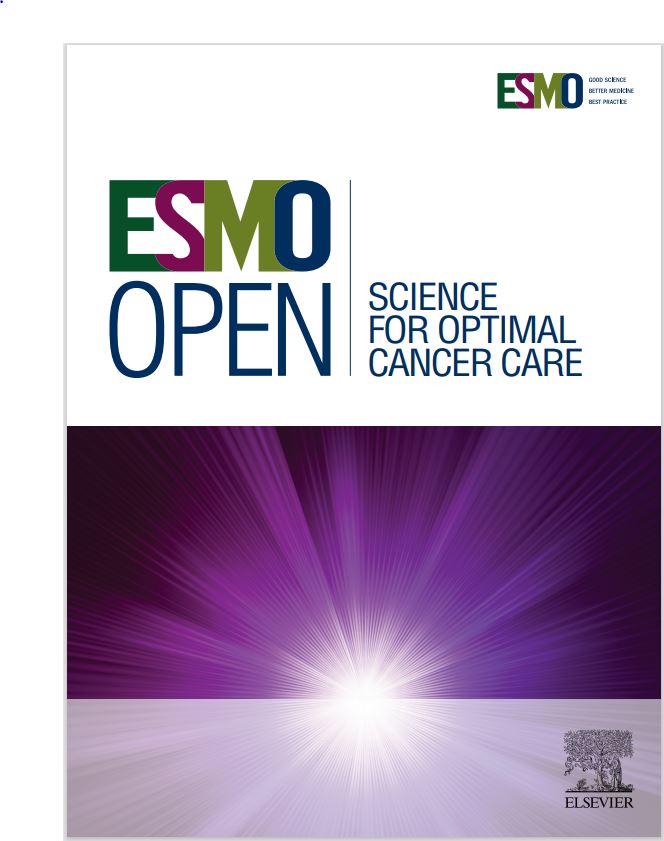鼻咽癌远处转移的多模式人工智能风险分层
IF 8.3
2区 医学
Q1 ONCOLOGY
引用次数: 0
摘要
TNM(肿瘤-淋巴结-转移)分期系统是鼻咽癌(NPC)治疗决策的主要工具。然而,不同患者的治疗结果差异很大,对于远处转移治疗的指导方针仍然有限。本研究旨在开发和验证基于深度学习的风险评分,以预测NPC的生存。方法我们建立了一个鼻咽癌(GNPC)风险评分图,这是一个基于多模态深度学习的数字评分,结合了来自血红素和伊红染色组织切片的信号和临床信息。将NPC组织切片的数字化图像表示为图形,以捕获空间背景和肿瘤异质性。提出的GNPC评分是在来自两个独立队列的1949例患者中开发和验证的。结果GNPC评分成功地对两组患者进行了分层,在远处转移(P < 0.001)、总生存(P < 0.01)和局部复发(P < 0.05)方面取得了具有统计学意义的结果。对形态特征、分子特征和基因组谱的进一步下游分析确定了与基于gnpc评分的风险群体相关的几个因素。结论提出的数字评分对鼻咽癌的远处转移、总生存和局部复发具有较强的预测能力。这些发现强调了它在协助个性化治疗策略和改善鼻咽癌临床管理方面的潜力。本文章由计算机程序翻译,如有差异,请以英文原文为准。
Multimodal AI-based risk stratification for distant metastasis in nasopharyngeal carcinoma
Background
The TNM (tumour–node–metastasis) staging system is the primary tool for treatment decisions in nasopharyngeal carcinoma (NPC). However, therapeutic outcomes vary considerably between patients, and guidelines for the management of distant metastasis treatment remain limited. This study aimed to develop and validate a deep learning-based risk score to predict NPC survival.
Methods
We developed a graph for nasopharyngeal carcinoma (GNPC) risk score, a multimodal deep-learning-based digital score incorporating signals from both haematoxylin and eosin-stained tissue slides and clinical information. Digitised images of NPC tissue slides were represented as graphs to capture spatial context and tumour heterogeneity. The proposed GNPC score was developed and validated on 1949 patients from two independent cohorts.
Results
The GNPC score successfully stratified patients in both cohorts, achieving statistically significant results for distant metastasis (P < 0.001), overall survival (P < 0.01), and local recurrence (P < 0.05). Further downstream analyses of morphological characteristics, molecular features, and genomic profiles identified several factors associated with GNPC-score-based risk groups.
Conclusion
The proposed digital score demonstrates robust predictive performance for distant metastasis, overall survival, and local recurrence in NPC. These findings highlight its potential to assist with personalised treatment strategies and improve clinical management for NPC.
求助全文
通过发布文献求助,成功后即可免费获取论文全文。
去求助
来源期刊

ESMO Open
Medicine-Oncology
CiteScore
11.70
自引率
2.70%
发文量
255
审稿时长
10 weeks
期刊介绍:
ESMO Open is the online-only, open access journal of the European Society for Medical Oncology (ESMO). It is a peer-reviewed publication dedicated to sharing high-quality medical research and educational materials from various fields of oncology. The journal specifically focuses on showcasing innovative clinical and translational cancer research.
ESMO Open aims to publish a wide range of research articles covering all aspects of oncology, including experimental studies, translational research, diagnostic advancements, and therapeutic approaches. The content of the journal includes original research articles, insightful reviews, thought-provoking editorials, and correspondence. Moreover, the journal warmly welcomes the submission of phase I trials and meta-analyses. It also showcases reviews from significant ESMO conferences and meetings, as well as publishes important position statements on behalf of ESMO.
Overall, ESMO Open offers a platform for scientists, clinicians, and researchers in the field of oncology to share their valuable insights and contribute to advancing the understanding and treatment of cancer. The journal serves as a source of up-to-date information and fosters collaboration within the oncology community.
 求助内容:
求助内容: 应助结果提醒方式:
应助结果提醒方式:


